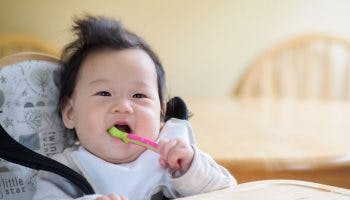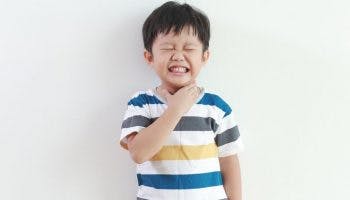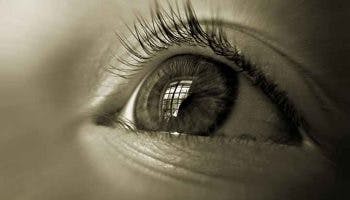How to Recognise Epilepsy Symptoms in Children
Published | 6 min read
It’s essential for parents to be aware of epilepsy symptoms in their children. Early intervention can prevent flare-ups.
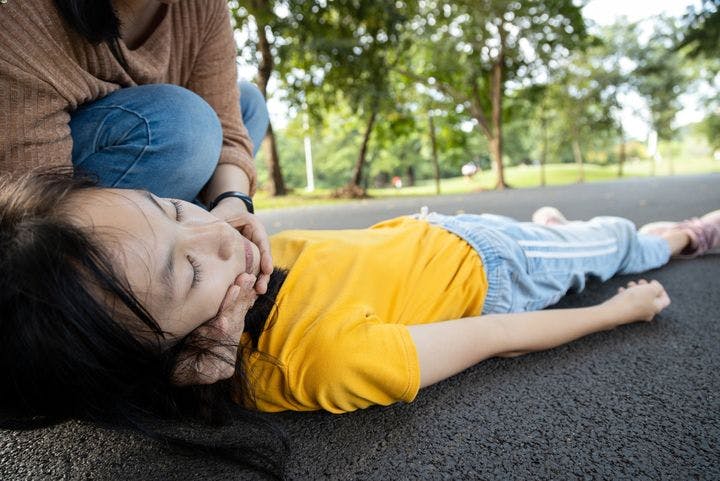
Epilepsy symptoms are but one — repeated seizures. Though, the condition carries a low risk of serious injury or death. In fact, the seizure episodes are short and usually stop on their own. They can also be controlled with regular medication use.
Here are the steps a parent can take to minimise the risk of a flare-up in their children.
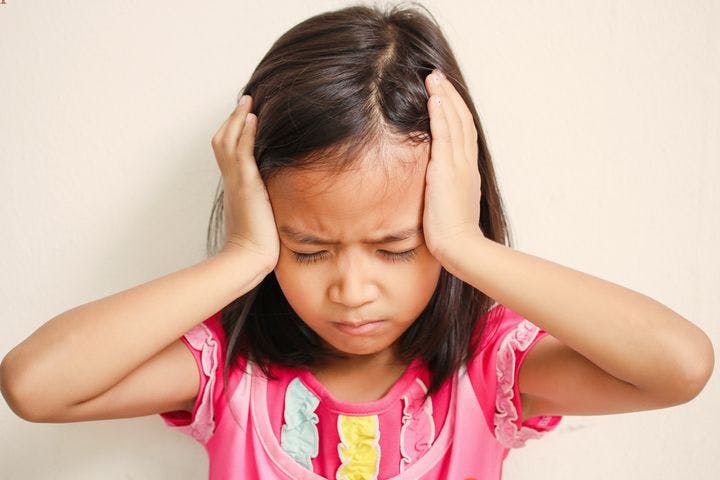
Understanding the Causes of Epilepsy in Children
Epilepsy in the young can occur for numerous reasons but typically revolve around focal or generalised seizures. Focal seizures can be simple or complex in nature and start in one area of the brain. A physician will classify simple focal seizures into four groups – autonomic, motor, psychic, and sensory. These can present with distinct symptoms, including:
- Autonomic – changes in blood pressure, heart rhythm, or bowel or bladder function
- Motor – jerking movements in the foot, an arm or a foot, or other body parts
- Psychic – a triggering of past emotions or memories that incite fear, anxiety or déjà vu
- Sensory – hallucinations, olfactory distortion and hearing problems
Generalised seizures may develop from abnormal electrical activity prompting a seizure in both brain hemispheres simultaneously. The different types of generalised seizures are:
- Absence seizures
- Atonic seizures
- Convulsive (tonic-clonic) seizures
- Myoclonic seizures
Absence seizures
These seizures centre around an epileptic activity that takes place throughout the brain. The activity is mild in nature and can give rise to unconsciousness and blank staring. It also begins and ends abruptly, and without warning. A person with this seizure may lose muscle control and perform repetitive movements, such as:
- chewing
- rapid breathing
- rhythmic blinking
- tugging at clothing
Absence seizures are also brief, and will only last two to 10 seconds at a time.
Atonic seizures
This type of seizure is rare and will see a child suddenly losing consciousness and collapsing. Because of this, they may be vulnerable to hitting their head on the ground. Normally, a child will regain consciousness and be able to walk again after a few seconds.
Convulsive seizures
Electric discharges will encircle the brain and result in a child losing consciousness immediately. This seizure can last for one to three minutes, and sometimes five minutes. A seizure that prolongs for more than five minutes may be life-threatening and requires on-the-spot medical assistance.
During the tonic phase, a child’s muscles will stiffen and they’ll fall to the floor. An increase in bladder or bowel pressure will also produce urinary or faecal incontinence, respectively.
The child’s limbs will then jerk and twitch rhythmically during the clonic phase. Unswallowed saliva will froth at the mouth, whereas breathing may be irregular.
Myoclonic seizures
This seizure materialises as a single event or series, but will not deteriorate memory or consciousness. It’s synonymous with several types of childhood epilepsy. Jerking may also ensue in different muscles.
In addition, childhood epilepsy may also stem from acquired causes, such as:
- Stroke
- Tumours
- Brain damage
- Febrile seizures
- Head injuries
- Infections of the central nervous system
- Imbalances in the neurotransmitters
Traditional Chinese Medicine (TCM) states the condition arises from phlegm, fright, wind and blood stagnation. “Congenital deficiencies, lack of essence, poor nourishment and a spleen deficiency can impair qi regulation and fluid circulation. Over a prolonged duration, phlegm will start to form internally.
Repeated encounters of fright will also interrupt the flow of qi. Subsequently, it’ll provoke phlegm and move upward to confuse the heart and mind, and disrupt the flow within the meridian”, explains physician Lim Sock Ling.

Ways to Suppress Epilepsy Symptoms in Children
Recognising the signs of epilepsy can help parents take suitable steps to prevent their child from experiencing a more severe form of the condition. Firstly, a parent must be present with a child until they regain consciousness. Next, they must also ensure that the child is out of harm’s way.
Finally, they’ll need to keep the child’s airway clear, loosen clothes that are tight around the neck and place a small, soft object under their head. If the child doesn’t regain consciousness within five minutes, they’ll need to call a paramedic.
Use medications
A clinical physician will identify the type of seizure before proposing the appropriate medication. They will also consider a child’s age, the side effects of using specific medicine, as well as its ease of use. It must be remembered that they don’t cure epilepsy, but only control seizures.
Generally, it’s taken orally in capsule, sprinkle, syrup, or tablet form. A physician may also give the medicine through the nose or rectum during emergencies. If you admit your child to the hospital, medication can be administered intravenously or by injection.
It’s pivotal that parents give their epileptic children medication on time and as per the recommended dosages. More importantly, refrain from stopping medicine use as it can worsen the severity of their seizures.
Even where your child is free from seizures, do not make any changes to the medication regimen without consulting your paediatrician, and follow-up regularly.
Adhere to prescription diet plans
A keto diet may also be a helpful addition to a routine that helps keep epilepsy at bay but are only suggested when medications prove to be ineffective. It’s thought that the components of this diet – high fat, low sugar – uniquely alters brain excitability. Consequently, it reduces the frequency of seizures in children.
Alternatively, parents can also control epilepsy symptoms by putting their children on a modified Atkins diet. Two differences between the Atkins and keto diets are the higher number of calories and protein intake in the former. There’s also a no-calorie or fluid limitation, and no restriction on the consumption of oils and dairy products.
Consume herbal formulas or ingredients
Herbal ingredients can also potentially help with epilepsy symptoms. Physician Lim advises using Acorn Tatarinowii Rhizoma (shi chang pu, 石菖蒲) to increase appetite, benefit the brain, awaken and clear the mind. and remove phlegm and dampness.
The use of a decoction or volatile oil extracted from the ingredient has also exhibited anti-convulsive effects. Also, make sure your paediatrician is aware of the herbal remedies you may be using or want to use.
Turmeric (jiang huang, 姜黄) is also beneficial for lowering the severity of epileptic seizures. It contains curcumin – a type of compound – which possesses antioxidant and anti-inflammatory properties, which can influence chemicals in the brain.
Cat’s claw (gou teng, 钩藤) is another herb that can help decrease dizziness, epilepsy or liver hyperfunction. A 6-week study in animals showed that it protects the brain in epileptic seizures. It’s worth noting that the use of this herb can exacerbate the symptoms of autoimmune diseases.
Hence, children diagnosed with lupus, multiple sclerosis and similar diseases should refrain from using the herb. Also, do avoid this herb if your child is undergoing surgery within two weeks as it can make bleeding control difficult.
Undergo a procedure or surgery
Surgery and vagus nerve stimulation are only considered when medications fail. The latter is a procedure that helps stop seizures in children that struggle to control epilepsy with medication. It involves surgically placing a small battery into the chest wall.
Then, small wires are attached to the battery. The main function of the battery is to send energy impulses to the brain. If a child feels a seizure coming on, they can activate these impulses by holding a magnet over the battery.
Surgery, on the other hand, can be contemplated if a child’s seizures are hard to control and starts in a part of the brain which doesn’t affect speech, memory or vision.
Early intervention will enable you to prevent your child’s epilepsy symptoms from flaring up. Speak to a TCM practitioner to ascertain if a herb is safe to use based on your child’s body constitution.
References
- Epilepsy Foundation. Managing Your Child’s Epilepsy. [online] [Accessed 17 February 2022]
- Massachusetts General Hospital. Childhood Epilepsy: Causes. [online] [Accessed 17 February 2022]
- Johns Hopkins Medicine. Focal Seizures. [online] [Accessed 17 February 2022]
- Johns Hopkins Medicine. Generalized Seizures. [online] [Accessed 17 February 2022]
- Johns Hopkins Medicine. Seizures and Epilepsy in Children. [online] [Accessed 17 February 2022]
- Mayo Clinic. Febrile Seizures. [online] [Accessed 17 February 2022]
- Epilepsy Foundation. Seizure First Aid. [online] [Accessed 17 February 2022]
Share this article on



